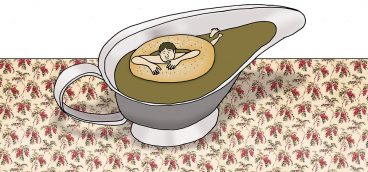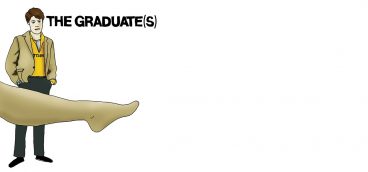Image and Reality: When They Don’t Match

There’s a saying in Texas, “He’s all hat and no cattle.” I don’t know why I was thinking about Texas as I flew aboard a US Airways flight bound for Ireland. It’s probably because I had just read Doug Parker’s Letter From The CEO in the in-flight magazine, Attaché. Parker’s obligatory dear-dummy letter was an almost surreal demonstration of yet another company’s image not matching its true identity.
I was experiencing the Zen-like relief of having just made an international connection by the skin of my teeth. I was also enjoying the irony of yet another company advertising its biggest weakness. All you need to do is think about Verizon’s television commercials about its powerful service as you drive north on Interstate 79. The Meadville exit is like the Bermuda Triangle of dropped cell-phone calls.
In Parker’s letter, titled “Our New Team,” the second sentence read: “We know how important it is to our customers to get to their destination on time without having their travel plans disrupted.”
That day, I could have introduced you to at least 17 people who missed their international connections, who would have accused Mr. Parker of selling snake oil right before they went Oscar de la Hoya on him. Fortunately, I was not one of them.
What most frustrated my fellow passengers was the fact that the four-hour delay was not a result of weather or a mechanical problem. We had a waiting plane but no crew.
When the crew, which was delayed in Hartford, finally touched down in Pittsburgh, most of my fellow international travelers had a shot at making their flights if Waldo Pepper and his gang had scurried to our gate. But, according to work rules in their acrimoniously negotiated contract, our crew stopped to eat their lunch on the way to our gate. Granted, they were entitled to take their lunch break, but according to US Airways crew people I chatted with, the pilots and flight attendants are so angry about their new contracts, they don’t skip any breaks as they may have done in the past in the interests of getting people somewhere on time.
When the gate agents heard about the gastronomical insult to injury, they quietly snuck away for their shift change to avoid the wrath of the passengers. I can’t say I blame them. I wouldn’t relish telling a family of seven that they were going to miss their cruise ship in Italy because some guy needed a hoagie real bad.
Mr. Parker also wrote in his letter, “The sole focus of the agents who staff the centers will be getting customers who have missed their flights, due to delays or cancellations, onto another flight to their destination as soon as possible.”
Interestingly, one of my fellow passengers at the gate said, “I’ve been here for seven hours trying to get on a flight to Philadelphia.”
When we did finally get to Philadelphia, there was no one at the gate to direct us to the international gate despite Mr. Parker’s promise in his letter, “The best part about this new resource for customers is that they will be met at the gate by a member of the team.”
A US Airways crew person on our flight, who was getting a hop to Philadelphia, told us, “Those folks kind of disappear on the weekend.” Fortunately, he was able to tell us which way to get to the international gates, which were a Bataan death march away from our arrival point.
Had it not been for a friendly US Airways golf-cart driver, who gave us a lift to our international gate, we would never have made the flight. We would have had to cut short our vacation while incurring the expense of a hotel room in Philadelphia. When we got to our gate just as the doors of the plane were closing, we gave our airport Samaritan a $20 tip. You’d have thought we offered to pay his kid’s college tuition. Given that he’d saved our vacation, it was the least we could do.
Despite the fact that we were sweating profusely when we got to our seats, we made the flight and Rocky Balboa was the in-flight movie. Life was good.
As I waited for take-off, I began to study Mr. Parker’s letter to fliers in Attaché. Quite simply, it was a masterpiece of public relations written by a gang of marketers without a basic grasp of reality. It reminded me of my stint as a low-paid flack for an international public relations agency back in the ’80s. I can just see a cabal of Marshall McLuhan wannabes on the US Airways PR team mapping out the post-merger, I-only-had-two-Coronas-officer publicity campaign.
In a conference room at the airline’s headquarters in Phoenix, some team leader wearing Gucci loafers and no socks writes bullet point No. 1: “Parker letter for Attaché magazine.”Bullet point No. 2 was probably, “Highlight investment in ticket agents and ground staff, a new Passenger Control Center and better personal communication.”
Sounds like a great idea if it were only true. US Airways has made specific strategic decisions that have led to delayed flights and angry customers, all in the interest of justifying to Wall Street that its merger with America West would generate a more profitable airline. The re-designation of hubs to regional hubs, the introduction of regional jets and the re-negotiation of union contracts have clogged traffic and lowered the morale of the workers who face the public. Of course, you can’t see that from Phoenix.
US Airways’ advertising and public relations folks are forging the image of another Southwest Airlines, yet the identity is that of the gang that couldn’t shoot straight. The image being evangelized was one of on-time and great service. Yet the true identity is delays and lack of communication.
Parker’s ghostwriters probably never had the pleasure of making a Pittsburgh-to-Philadelphia connection on their way to Europe during the summer. And it doesn’t get better when you look at nationwide statistics.
In June of 2007, 30 percent of flights in this country were delayed an average of 62 minutes. According to Newsweek, only 71.4 percent of flights arrived on time and almost 20,000 passengers were involuntarily bumped.
In July, almost 17,000 flights were cancelled. Yet, fliers still fly. During the last four years, the number of domestic passengers is up 21 percent while the numbers of flights rose only 4 percent.
Many of US Airways’ chief strategies play into this problem, specifically regional aircraft served by fewer hubs.
The switch to regional jets and the re-designation of Pittsburgh as a “regional” hub has created a log jam of flights. According to Airline Monitor, from 2000 to 2006, all U.S. airlines eliminated 385 large jets, yet added 1,029 other jets. Smaller planes are more efficient than big jets, however, you need more of them to cart around the same number of people. As a result, small regional jets engulf the Philadelphia Airport like summer bugs swarming a back porch light.
Also, the design of the Philadelphia Airport, where most Pittsburgh passengers must make an international connection, in and of itself, creates delays. Despite what Danny DeVito says on his weekly FX comedy, it is not always sunny in Philadelphia. When the weather doesn’t cooperate and traffic must be shifted among an all-too-small number of runways ill-equipped to accommodate growing traffic, delays of what once were minutes are now hours.
So despite what the company says, it seems to me that US Airways is doing everything in its power to alienate Pittsburgh customers. From the loss of our hub status, to fewer flights, to the loss of local jobs and overpriced tickets, transportation options for Pittsburghers are running out. Oh yeah, and it now costs two bucks a bag for curbside check-in, thank you very much.
If the airline really wanted its image to match its identity, the new slogan could be quite simple.
“Because you don’t have much of a choice in air travel, US Airways begins with us.”





